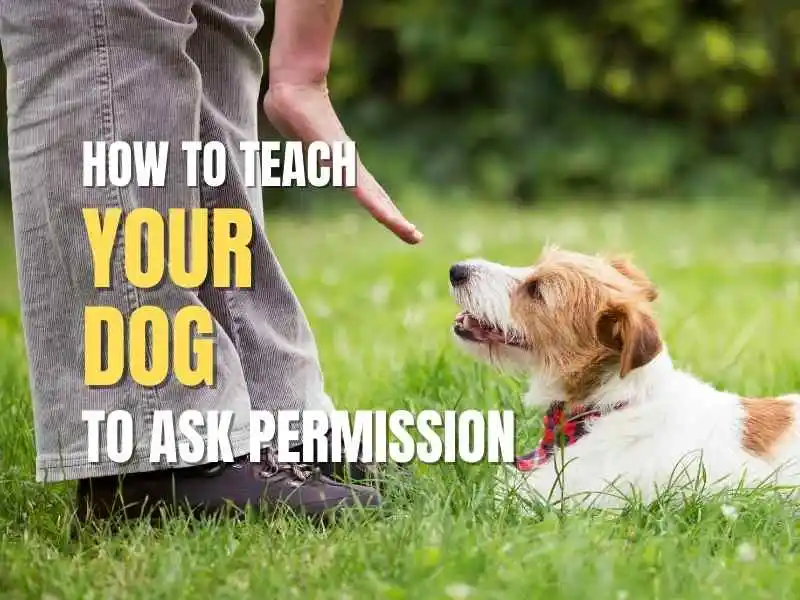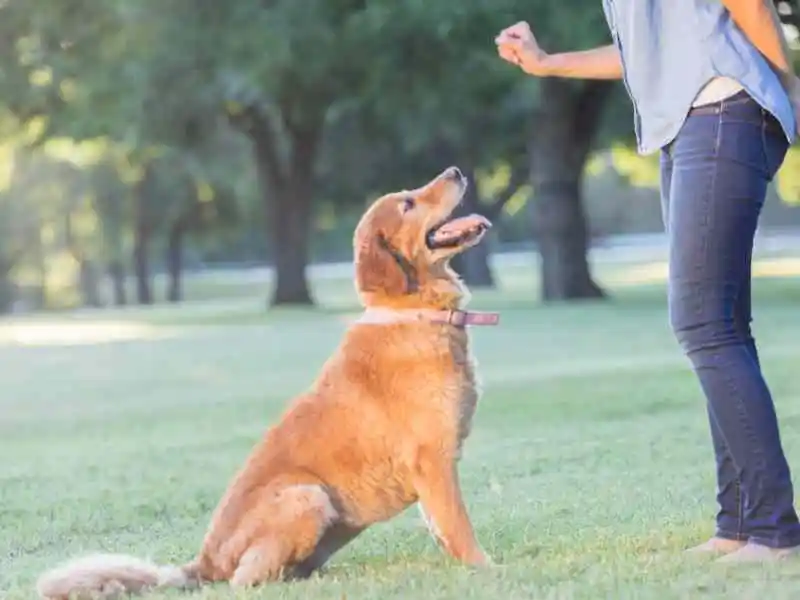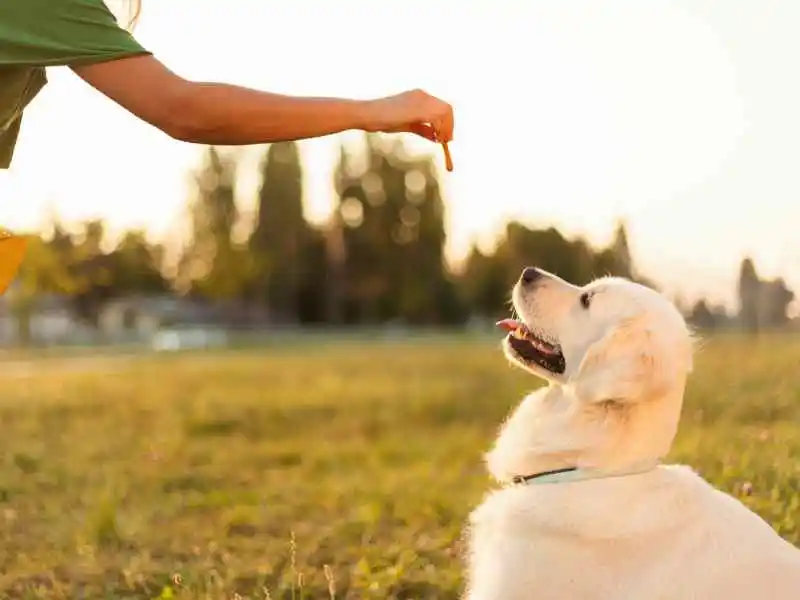Have you ever had to fight the urge to eat a piece of chocolate or a slice of cake sitting on the table? Sometimes we act to satisfy an urge to get immediate gratification. Urges are a compulsion to work or even react in a specific manner with little regard for potential consequences. Just like humans, dogs have their urges as well. But unlike humans, dogs need to be trained to control impulse action.

Our dogs have specific urges like going outside and running, snatching toys/balls, even shoes, jumping at people, and much more. However, their desires override any sense of safety or consequences for dogs. If you begin to think about it, you will lose count of the times your dog would run after something or tug at something without care.
It’s worrisome. We don’t want our dogs running into the street without looking and getting hit. We don’t want them attacking strangers, either. A dog without impulse control training is hazardous to itself and its environment. We can modify a dog’s behavior for safety and security by training our little buddies to control impulses and ask for permission.
How Does Impulse Control Help?
A dog’s ability to ask for permission comes from impulse control training. But unfortunately, many of you would need to learn what impulse control is.
Impulse control means teaching your dog to avoid bad behavior by not rewarding it under any circumstance. Most trainers modify dog behavior by consistently correcting bad behavior wherever and whenever. However, we will try a different way. We will only reward or give attention to our dogs if they display good behavior.
There are a few ways you can teach your dog impulse control. You are training your dog to prioritize commands over distractions. These commands include Look at me, leave it or wait. In theory, impulse control seems challenging, but it isn’t.
Impulse control isn’t difficult to attain; it requires consistency and discipline for you and your dogs. It is not something you can train and leave be; it needs to be practiced daily without pause.
What we are trying to say is that as much as impulse control training is meant for you as it is for your dog.
You will see progress in your dog’s behavior as you continue to impulse control and train your dog. In due time, your dog will reconsider bad behavior before acting. For example, instead of jumping on you and tugging your sweater, your dog will sit and wait for love and praise from you.
How to tell if your dog needs impulse control training?

By now, you probably think: “Your dog is well-trained and just simply great. It does not need any practice or training.” Despite this, you must never forget that all dogs, regardless of breed, are opportunistic; if they can do something, they will. On top of that, if you, intentionally or unintentionally, reinforce any action, your dog will do it even more.
One of the most common examples is your dog jumping on people. Unfortunately, we make the mistake of reinforcing this behavior even though it is considered terrible.
Some of the red-light indicators that your dog needs impulse control training are:
- Eating random stuff off the ground
- Demanding attention or playtime by barking
- Jumping on everyone
- They Chase anything and everything especially moving objects and small animals.
- Darting out of doors and windows
- Pulling on their leash
- Throwing rage fits and barks when they meet new dogs or people
Benefits of impulse control training
Impulse control training has so many benefits that it is impossible to ignore. First, every dog needs impulse control training. But first, this is what keeps your dog grounded and well-mannered. The only difference between a well-trained dog and any other dog is their ability to control impulses.
You get a more relaxed and calm dog when you teach your dog to control its urges. For example, when we talk of a dog that rushes out at every chance they get, we know that dog needs impulse control because rushing out is dangerous. It is hazardous for the dog and the environment. Therefore, you must teach your puppy to sit and patiently wait for a command or cue—for example, hand gestures or words like “run” to run around.
More benefits include safety, structure, control, and self-discipline. Impulse control training makes your dog secure for itself and those around it. Even though dogs are brilliant animals, they still are canines and prone to attack when threatened. Moreover, giving your dog impulse training makes it secure to be around people. It gives you control and structure in your life and routine.
One of the most significant benefits of impulse training is gaining self-control for ourselves. The training is like a double-etched sword. While training your dog to control its impulses and urges, you are training yourself to be consistent, responsible, and attentive. Fitness enthusiasts also use impulse training to fight cravings and the urge to eat unhealthy meals.
Train your dog to ask for permission

The first step to impulse control training is understanding your dog trainer and owner’s role. You are the leader and the one making the rules. Manifest it—the first step to impulse control is training the dog to ask for permission.
Practice it daily with different thresholds. The fun part about impulse training is that you can quickly turn it into a game to play with your dog.
If you feed your dog, you unleash it. Today, you are on an off-leash hike or trail run. Here is a game:
- Take two pieces of dog treats and hold each treat in a fist in either hand.
- Ask your dog to either sit or lie down. We recommend ‘sit.’
- Now, wait for your dog to sit and look you in the eyes. If it does, mark that behavior as a yes and reward it with a dog treat from one hand.
- Repeat the game but switch hands every time your dog gives you eye contact
- As your dog gets better at eye contact, increase the duration of eye contact by seconds every round.
Through this game, your dog will understand that to get something, in this case, a doggy treat; he has to ‘ask for permission’ by looking at you. You can practice this whenever you are outside. Please do not release your dog from the leash unless he looks at you for approval. Once he does, release him to go and run around.
At the beginning of your impulse control training, your dog will likely sniff at your hand or paw at it to get the dog treat. Keep control, do not open your fist. Keep it closed and maintain distance if you have to. Remember to keep yourself patient until you make eye contact. That’s the key to impulse control training.
Indoor Training
Take the hypothetical situation: You are going outside and must stop your pup from rushing out and ask for permission first.
- You are indoors. Keep your dog on a leash and walk towards the front door.
- Place your hand on the door-knob and say ‘WAIT .’Firmly, confidently, emphasizing the ‘T.’
- Then pause and open the door. Suppose the dog tries to rush out. Please bring it back in. You can even use spatial pressure to block its way using your body.
- Be quick. Restrict it before it crosses the door.
- Now repeat. With each try, your dog will get better. When it does stop, when you say wait. Reward it.
- Practice this every day until your dog stops darting outside onto the road.
Small dogs
More than larger breeds of dogs, smaller dogs are known to be tyrants. They can be more demanding and pushier than the bigger dogs. Sometimes, we do not see it because moving or picking a smaller dog is more manageable. But they can still learn to ask for permission. The jumping and barking of a smaller dog between your legs can be more dangerous and even more frustrating to break these habits. Training your small dog would be like giving yourself some peace of mind.
Impulse training for smaller dogs is the same but with a few changes.
- Train at their level
- Do not stand over them. They might feel intimidated
- Kneel or sit while training
- It would be best if you were calm and quiet
- Have small treats that are suitable for its size and breed
The bottom line to impulse control training is to make your dog understand that ‘nothing in life is free.
Dog impulse control training is an essential part of Mannering, your dog. A dog that cannot control its urges is unacceptable because it can cost your dog its life. It can also be a nuisance and unfair to guests. We love our furry best friends but must protect and nourish them. Training your dog can also help you strengthen your relationship with it. All in all, impulse control training allows your dog to wait for permission; This enables an equitable dog re-group and calms its emotions that can run high.

